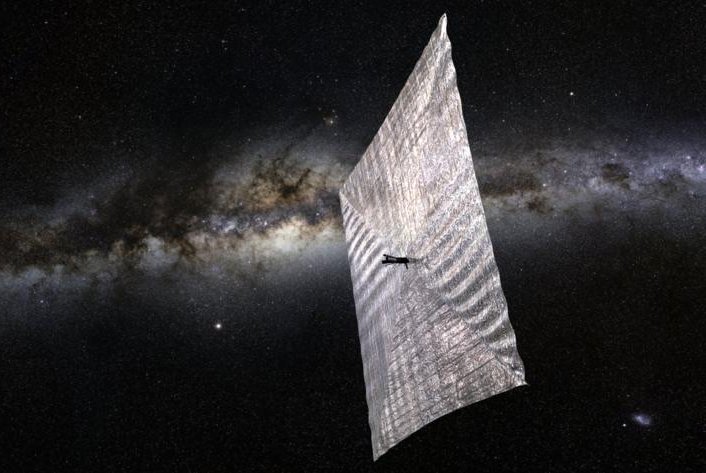An illustration shows Planetary Society’s LightSail solar sailing spacecraft. Photo by Josh Spradling/The Planetary Society
PASADENA, Calif., Jan. 27 (UPI) -- Why burn expensive fuel, when you can harness the kinetic power of the wind -- solar wind. It's always been a dream of aerospace engineers to set sail in the cosmos.
That possibility is gaining momentum as the space research nonprofit The Planetary Society prepares to launch LightSail, its tissue-box-sized sail-powered spacecraft.
"We strongly believe this could be a big part of the future of interplanetary missions," Bill Nye (the Science Guy), CEO of the research outfit, told The New York Times this week. "It will ultimately eventually take a lot of missions a long, long way."
The miniature craft is set to launch in May, and will spend its first four weeks in orbit without a sail. After a month of testing, the space vehicle will test its sail deployment by releasing four booms and four triangle sails, and while it won't go anywhere, it will take photos. The four unfurled sails will fit together to encompass a four-sided canvas stretching 345 square feet.
The sails will be composed of Mylar, an ultra-thin plastic material used to make space blankets and balloons. The mylar will catch and harness the kinetic power of the photons that are constantly streaming through space. When photons bounce off a shiny surface the transmit a tiny amount of energy. Collected over a large area, that momentum can slowly accelerate a craft.
"Unlike chemical rockets that provide short bursts of thrust, solar sails thrust continuously and can reach higher speeds over time," the nonprofit explains on their website.
The Planetary Society isn't first in the race to harness the power of solar wind. Japan launched the first solar sailing vessel in 2010 with its Ikaros spacecraft, which was continuing to gain speed in 2013.
NASA had been planning a similar mission for 2015, the Sunjammer mission, but canceled the construction of a large sailing spacecraft after confidence in the contractor waned.
The first launch of LightSail will be be a solo test run, but a second launch in 2016 will reach a higher orbit. The LightSail is expected to be harnessed to Prox-1, a small satellite-inspecting satellite developed at Georgia Tech, and lifted into orbit on the SpaceX Falcon Heavy rocket. After the spacecraft and satellite separate, LightSail will attempt to use its sails to maneuver through space.















